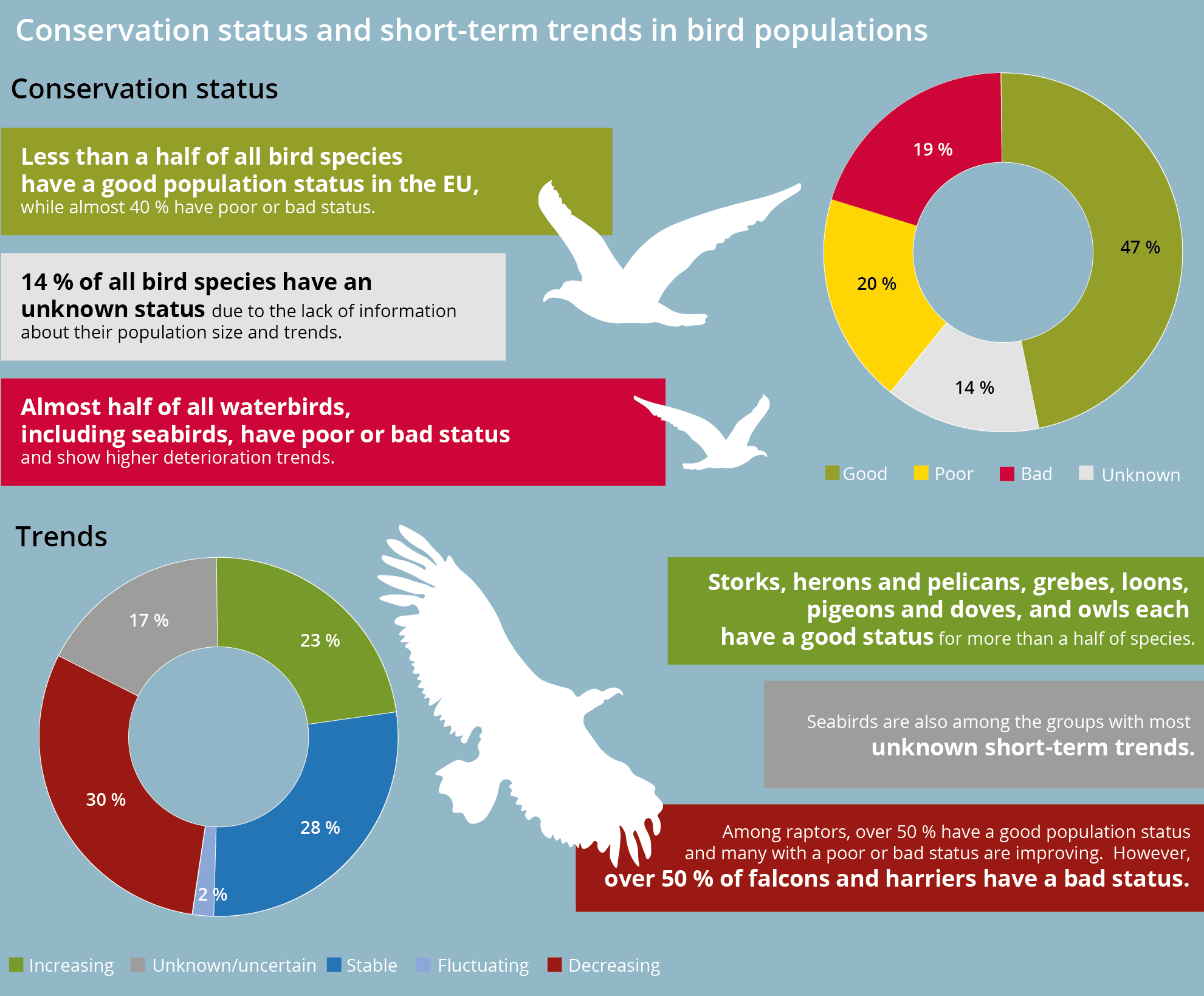The European Union (EU) protects over 460 species of wild birds throughout their entire life cycle under the EU Birds Directive. According to the latest assessment, around half of these wild bird species have a good population status at the EU level, which is slightly less (5 %) compared to the last reporting period (2008-2012). In the last 6 years, the proportion of birds having poor and bad conservation status has increased by 7 % to reach a total of 39 %.
Whilst 47 % of 463 bird species in the EU are in good conservation status, 39 % are in poor and bad conservation status.

Despite some improvements, progress has not been substantial to halt the deterioration in the population trends of EU bird species. This indicates that additional efforts will be needed to attain knowledge and reverse the current trends for the benefit of nature and people.
For the complete analysis on bird populations, see the latest EEA report on the ‘
State of nature’
● Breeding birds have the highest share of reports showing improving population trends, thanks to the implementation of habitat protection or restoration, and improvements in knowledge, better monitoring and awareness.
● The proportion of wintering bird species, with increasing short- and / or long- term trends, has dropped by 9 % when compared to the last reporting period (2008-2012).
● Farmland and forest birds have seen few improvements.
● 14 % of all bird species have an unknown status. This highlights the need to establish or re-enforce appropriate, coordinated, state-supported monitoring schemes in all Member States.
Background information: Why do we monitor bird populations?
Birds are sensitive to environmental change and their population numbers can reflect transformations in ecosystems. Therefore, monitoring the abundance and distribution of bird populations can be excellent barometers of the heath of the environment. In this regard, the EEA assessment on the ‘State of nature’ provides information on the size and trends of bird populations, their breeding distribution and its trends, as well as their main pressures and measures taken; it also includes the role of Natura 2000 sites.

Document Actions
Share with others